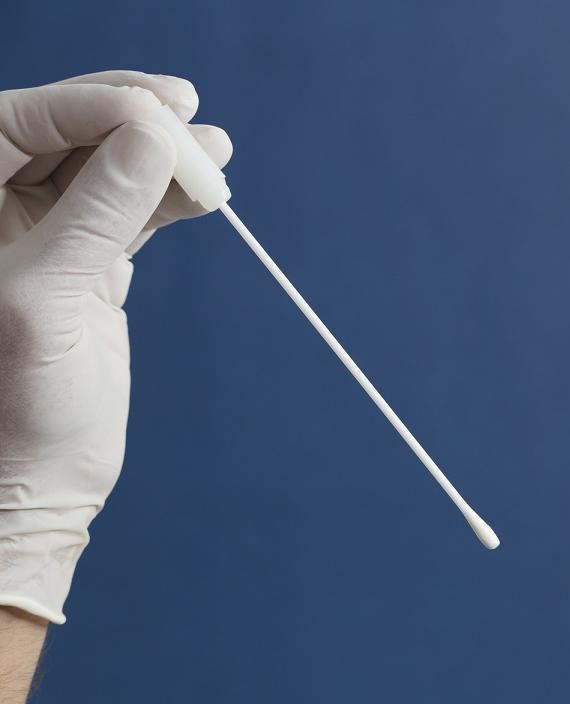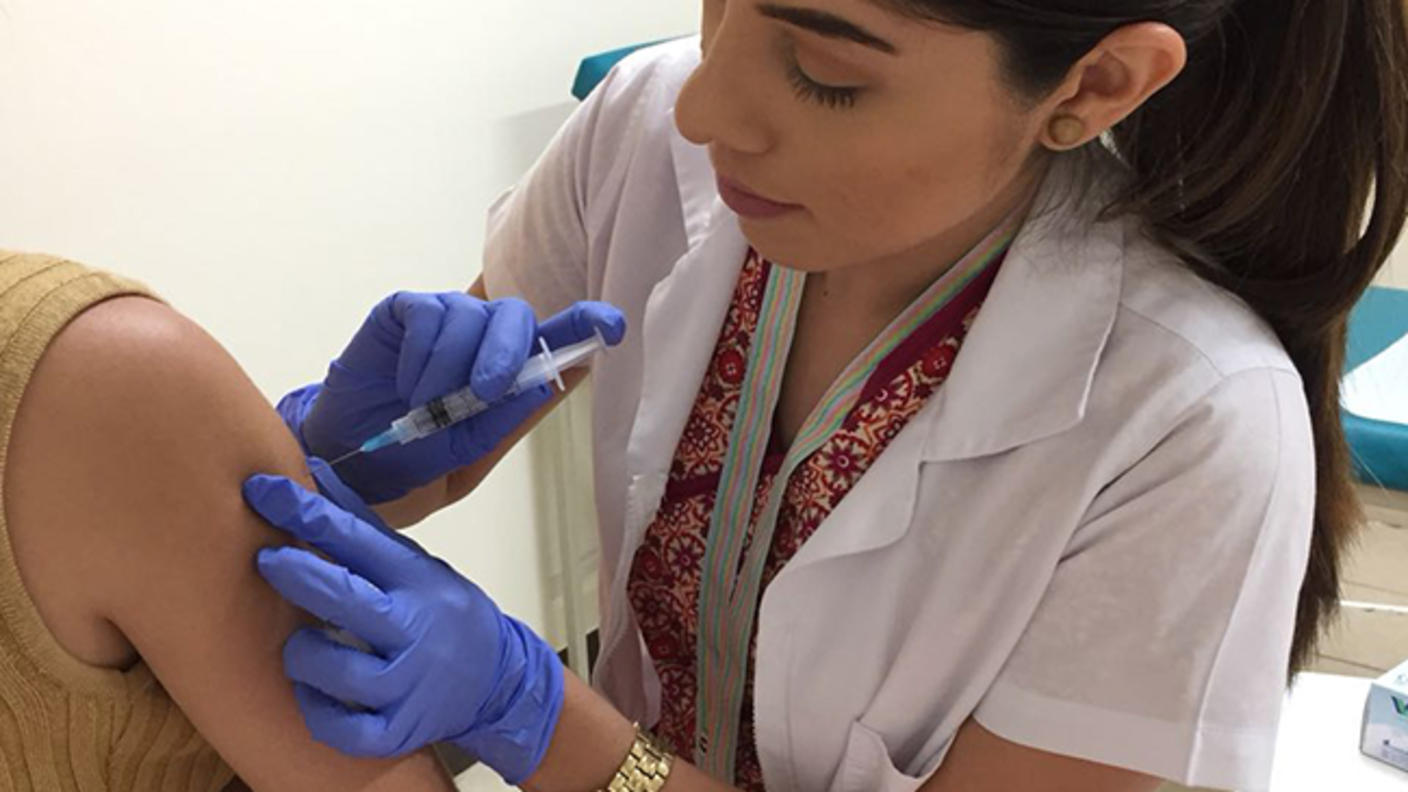Anal Cancer Advances Open Door to Screening and Prevention
, by Edward Winstead
UPDATE: This story has been revised to reflect the July 2024 release of new guidelines on anal cancer screening for people with HIV.
When Daniel G. Garza was diagnosed with anal cancer a decade ago, he had never heard of the disease. “Do you mean colorectal cancer?” he asked the doctor.
The doctor explained that Garza had a tumor on his anal sphincter. At the time, Garza had been living with HIV for 14 years. But he did not know that gay and bisexual men, especially those with HIV, have an increased risk of anal cancer.
“I had never talked about anal cancer with a doctor or with the gay men I knew,” said Garza, who lives in California. “No one ever said to me, ‘Hey, you should be aware that you have an increased risk of this cancer.’”
Garza’s unfamiliarity with anal cancer is perhaps not surprising. Many gay and bisexual men do not have basic information about the disease, studies have shown.
Since completing his cancer treatment, Garza has been trying to raise awareness of anal cancer, particularly among Latino and Hispanic communities. In the process, he has learned about research advances that could eventually help reduce the disease's growing burden.
For example, in 2022 a large NCI-sponsored randomized clinical trial demonstrated that detecting and treating precancerous growths in the anus substantially reduced a person’s risk of developing anal cancer. The study, called ANCHOR, included people with HIV aged 35 or older.
“The ANCHOR trial demonstrated that we can prevent this disease,” said Megan Clarke, Ph.D., of NCI’s Division of Cancer Epidemiology and Genetics (DCEG), who studies anal cancer and was not involved in the trial.
Dr. Clarke cautioned, however, that continued progress will depend on overcoming certain challenges, such as a shortage of health care providers trained in performing high-resolution anoscopy to detect and treat precancerous anal lesions.
Now that scientists know treating precancerous lesions can prevent anal cancer, more research is needed to determine the best ways to screen people for anal precancerous lesions. This work is under way. For instance, some investigators have been exploring strategies for conducting anal cancer screening in ways that reduce barriers to participation.
Such studies may help to generate the evidence needed to inform efforts to prevent anal cancer in the future, Dr. Clarke noted.
“We need to take the momentum generated by the ANCHOR results and use it to expand research on the disease,” she said. “For those of us who study screening, it’s an exciting time."
What causes anal cancer?
In the general population, anal cancer is rare, but certain groups have an increased risk of the disease. The highest risk groups include people with HIV and men who have sex with men. Overall, however, more women develop anal cancer than men in the United States.
Like most cervical cancers, nearly all anal cancers are caused by the persistent infection of anal cells with cancer-causing types of human papillomavirus (HPV).
If the immune system does not eliminate the infected cells, these cells may form precancerous growths, called high-grade squamous intraepithelial lesions, that can lead to cancer if left untreated.
Although HPV vaccines were initially developed to prevent cervical cancer, the vaccines also help protect against other HPV-related cancers, including anal cancer. Gardasil, for instance, has been approved for anal cancer prevention.
New guidelines on screening for anal cancer
When the ANCHOR results were published, Robert Yarchoan, M.D., director of NCI’s Office of HIV and AIDS Malignancy, said the findings for the first time provided a strong rationale for screening people with HIV for the presence of precancerous anal lesions.
For decades, clinics in places like New York and San Francisco have screened people in at-risk groups for anal cancer. But until recently there were no overarching expert-reviewed national or international guidelines for anal cancer screening.
That changed in March 2024, when an international group of experts representing the International Anal Neoplasia Society released consensus guidelines on anal cancer screening. Because the disease is rare in the general population, the guidelines focus on screening individuals who have an increased risk of the disease.
For instance, these guidelines recommend that anal cancer screening start at age 35 for some people who are living with HIV, particularly men who have sex with men and transgender women. For other people with HIV and for men who have sex with men and transgender women who are not living with HIV, they recommend starting screening at age 45.
“The ANCHOR trial provided additional momentum for us to publish the guidelines,” said Dr. Clarke, who served on the task force that created the recommendations.
In July 2024, a panel of experts in HIV care released new recommendations to prevent anal cancer for people with HIV, the first U.S. federal guidelines on the topic. The recommendations, which include a screening program to detect and treat precancer and prevent anal cancer for people with HIV, were also based in part on results from the ANCHOR trial.
The Prevent Anal Cancer Self-Swab Study
Over the past few years, researchers at the Medical College of Wisconsin, in Milwaukee, have been testing a home-based approach to anal cancer screening. In this approach, a person collects their own cells (self-swabs) and sends the sample to a laboratory for analysis.
The strategy was based in part on self-collection techniques that have shown promise in cervical cancer. The Food and Drug Administration has just approved two kits used for self-collection of vaginal samples for HPV testing.
To test the approach for anal cancer, the researchers recruited gay men, transgender women, and nonbinary people with an elevated risk of anal cancer.
Half the participants were randomly assigned to receive a kit in the mail that included a swab for collecting their anal cell samples; then they mailed those swabs to a laboratory for analysis. The other half were assigned to go to a nearby health clinic where a clinician collected an anal swab from the participant.
In the trial, 89% of the home-based screening group returned a swab for analysis. By comparison, only 74% of those in the clinic screening group followed through with the screening.
“We expected the results to favor home-based screening, because that’s what we have seen with cervical cancer studies,” said the lead researcher, Alan Nyitray, Ph.D., who studies screening for HPV-related cancers.
Dr. Nyitray said he was surprised, however, by the strong preference for home-based screening seen among study participants with HIV.
One possible reason for this result was “appointment fatigue,” according to the study’s Community Advisory Board. The board said that many people with HIV are tired of going to medical appointments and might welcome the option of at-home screening.
The insight about appointment fatigue could help researchers develop anal cancer screening programs that are as accessible as possible. “If we require patients to go into the clinic, then we are building disparities into the screening program,” said Dr. Nyitray.
People with HIV are often from underserved populations that have less access to health care, he explained. Home-based screening could potentially address some of these issues and barriers.
“Men are terrible about getting health care, especially preventive health care,” Dr. Nyitray added. “We need to keep all that in mind as we develop an anal cancer screening program.”
Overcoming barriers to anal cancer screening
The potential barriers to anal cancer screening include stigma surrounding anal cancer and anal intercourse, which is one way that HPV can be transmitted to the anus.
“Self-sampling could help address some of this stigma because it allows individuals to collect a sample at home or wherever they are comfortable,” said Jenna Nitkowski, Ph.D., who until recently was at the Center for AIDS Intervention Research at the Medical College of Wisconsin.
Home-based screening could also benefit those sexual and gender minority people, such as gay and bisexual men, who live in areas that lack clinicians with experience serving these groups, Dr. Nitkowski said.
In addition, the home-based option might be welcomed by sexual and gender minority groups that have historically faced discrimination from the medical community.
“For these groups, going to the doctor to ask for a screening test is not necessarily a simple or easy matter,” said Sarah Jackson, Ph.D., a DCEG investigator who studies cancer in transgender and gender-diverse individuals and was not involved in the trial.
She noted that home-based sampling was preferred by people with HIV and Black men who have sex with men—two groups at particularly high risk of anal cancer.
“For people in communities that have been discriminated against and have additional barriers to health care, anything we do to increase access to care is a positive step,” Dr. Jackson said.
Opportunities to educate people about anal cancer
As research on anal cancer screening expands, some investigators see opportunities to promote awareness of the disease, particularly among people at risk and their health care providers.
“We need to think about ways to educate clinicians so they can share information about anal cancer with their patients who might be at risk of developing the disease,” said Cameron Haas, Ph.D., a DCEG postdoctoral fellow who studies trends in the incidence of anal cancer.
Daniel Garza is ready to help. As an ambassador for NIH’s All of Us study, Garza aims to promote opportunities for Latino and Hispanic people to participate in cancer research. He also serves on a community advisory board for NCI researchers and speaks at cancer conferences.
“I believe that my story has a purpose,” Garza said. “If my story can help someone else get the health care they need and get their lives back on track, then I want to share it."


